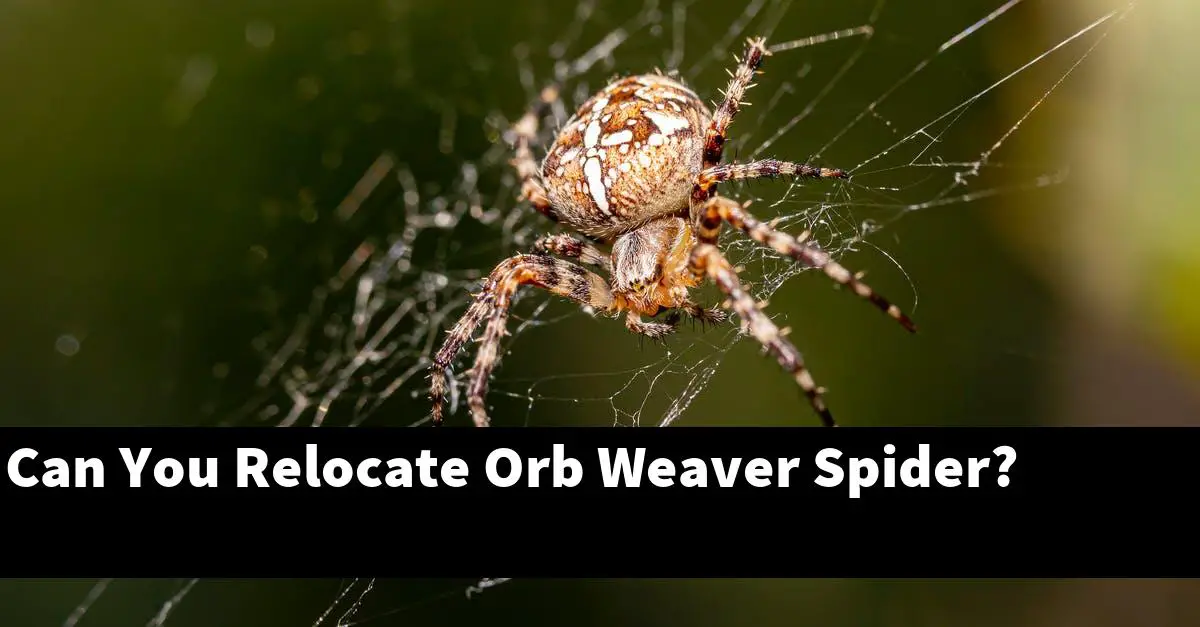Orb weaver spiders are a type of spider that is known for building large, circular webs. They are found in many parts of the world and are known for being very successful at catching prey.
Orb weaver spiders are not considered to be dangerous to humans, but their bites can be painful. If you are considering relocating an orb weaver spider, there are a few things you should keep in mind.
Table of Contents
Can you relocate an orb weaver spider?
Yes, it is possible to relocate an orb weaver spider. These spiders are not aggressive and will not bite unless they feel threatened.
They are also not poisonous. If you need to relocate an orb weaver spider, it is best to do so during the day when they are less active.
Gently place a cup or container over the spider and slide a piece of cardboard underneath to trap it. Then, you can release the spider in a new location.
How do you relocate an orb weaver spider?
There are a few ways to relocate an orb weaver spider. One way is to simply scoop the spider up with a cup or container and release it outdoors.
Another way is to gently place a piece of cardboard or paper under the spider and then slide it onto the new location.
Where do orb weaver spiders typically build their webs?
Orb weaver spiders typically build their webs in areas where there is a lot of insect activity. They build their webs in open areas so that they can catch as many insects as possible.
The spiders will build their webs in different areas at different times of the year depending on the amount of insect activity in that area.
What happens to an orb weaver spider’s web when it’s relocated?
When an orb weaver spider is relocated, its web will be disrupted and may not be able to function properly. The spider will need to rebuild its web in its new location.
This can be a difficult process, and the spider may not be able to make an identical web to the one it had before.
Why would you want to relocate an orb weaver spider?
There are a few reasons why someone might want to relocate an orb weaver spider. One reason could be that the spider is in an area where it is not safe, such as near a busy road.
Another reason could be that the spider is in an area where it is not welcome, such as in a home or office. Whatever the reason, it is important to remember that spiders are beneficial creatures and should only be relocated if it is absolutely necessary.
Can you relocate a spider?
Assuming you are asking if it is possible to relocate a spider, the answer is generally yes. Spiders can be relocated by gently scooping them up with a cup or container and releasing them outside in an area away from the home.
It is important to be careful when handling spiders, as some species can bite if they feel threatened.
How do you relocate a spider without killing it?
If you would like to relocate a spider without killing it, there are a few different methods you can try. One method is to place a cup or container over the spider and then slide a piece of paper underneath the cup.
Once the spider is inside the container, you can release it outside. Another method is to gently catch the spider with a piece of paper and then release it outside.
You can also try using a vacuum cleaner to suction the spider up and then release it outside. Whichever method you choose, be sure to release the spider in an area that is away from your home.
Can you pick up an orb weaver?
No, you cannot pick up an orb weaver. These spiders are not aggressive and will not bite unless they feel threatened.
If you must move an orb weaver, it is best to do so with a stick or other object.
Can you relocate a garden spider?
Yes, it is possible to relocate a spider. However, it is important to be careful when doing so, as spiders can be easily injured.
When moving a spider, it is best to use a container that has ventilation holes, such as a cup or jar. Gently place the spider inside the container and then cover it with a lid.
Once the spider is secure, you can then relocate it to a new location.
Summary
Orb weaver spiders are not harmful to humans and can actually be beneficial as they help control insect populations. They are not aggressive and will usually only bite if they feel threatened.
If you find one in your home, the best course of action is to gently relocate it outside.

